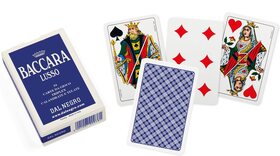Card Games
Please peruse our unique, quality range of playing cards, other card games and game equipment that accompany card games. Many make brilliant gifts - such as our beautiful inlaid playing card boxes, stunning Cribbage boards and quality poker sets.
An excellent and extensive selection of card games, high quality playing cards, card tables and other accessories. From Cribbage to Canasta, Blackjack to Bridge, here you will find all of our card based games.
The History of Playing Cards
Playing Cards originated in China before 1200AD and the original Chinese cards appear to have been related to the Chinese paper money of the time. In fact it seems likely that people created the cards by copying paper money and then both played with and for these cards! A pack consisted of 30 thin flexible cards - 9 of each suit plus an honour card. Superficially some pictures of the suits bear a resemblance to the original playing card suits of Asia and Europe e.g. the strings of coins can look like sticks or batons. So it has been assumed that these formed the basis for European playing cards although there is no definite evidence to prove this. Playing Cards were introduced to Europe in the 13th century. The most likely theory for their origin is that in the late 1300s, the Mamelukes of Egypt introduced their style of cards to Europe. A pack of Mameluke cards consisted of four "suits" of 13 cards each, just like modern playing cards. The suits were: Polo sticks Coins Swords Cups and each had ten numbered cards and three court cards - King, Vice-King and Second Vice-King. The earliest references to cards in Europe are mostly in France (the records of King Charles VI show that he bought 3 sets of playing cards in 1392). These original cards featured four suits (Cups, Swords, Coins and Batons) of 14 cards each - there was an additional card in each suit - the "Cavalier" or "Mounted Valet", the lowest of the four court cards. These suits are still the suit of choice in most Latin countries such as Spain and Italy, today. Additionally, there were also 22 extra "high cards" with individualistic designs which may have come from ancient Egyptian mysticism. Each card was individually painted; often a unique work of art in its own right, fit only for the very rich. These then were packs of Tarot cards although they were used for playing games as well as for divining the future. Playing cards with suits of Spades, Clubs, Diamonds and Hearts first appeared in France in the late 1400s and the English adopted this regime from France, the first English reference to cards being from 1462 when they were banned by parliamentary decree. Later on the colonialism of England and France resulted in this style of cards arriving all over the world and over time the English/French style of playing card came to be the de-facto global playing card standard although lots of regional variants still exist.





























